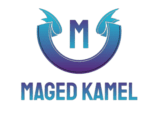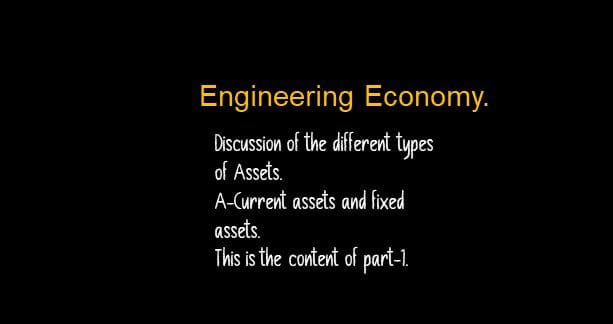Last Updated on March 21, 2024 by Maged kamel
Types of assets?
This post includes a more detailed idea about assets. The post has a discussion of the Terminology of Assets for item number 1 as shown in the next slide image.
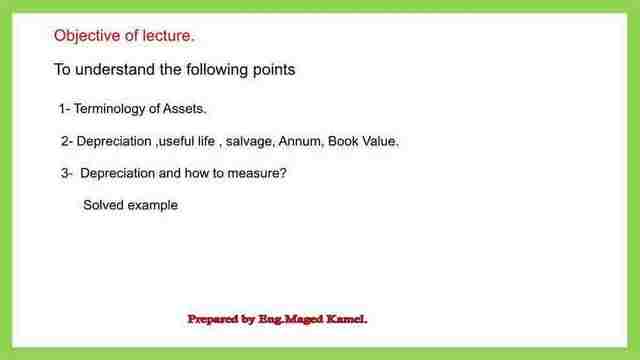
The general definition of types of assets.
Based on Physical Existence: Tangible assets are types of assets that can be seen, for instance in the construction field we need land, cash for site expenses, machinery like excavators, office supplies to construct buildings, etc.
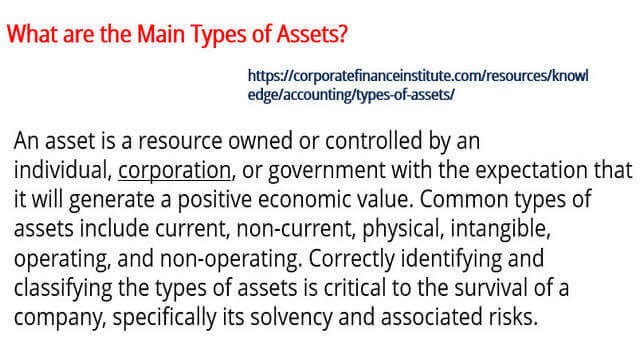
Intangible assets are types of assets that can not be seen, for instance, Goodwill, a reputable company can take loans from banks, or gain many from patents or brands, trade secrets, etc. Please find the list of Assets in the next slide image.
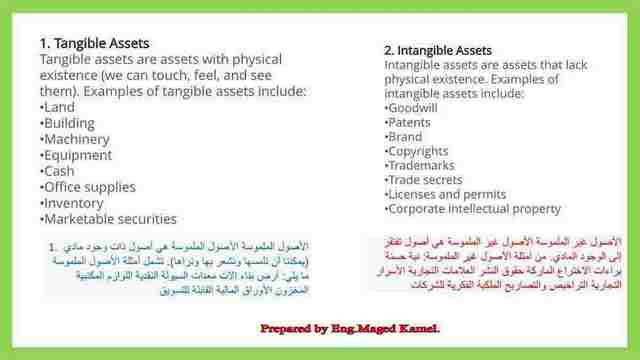
Again there is a classification of assets based on whether current assets or fixed assets 1. Based on Convertibility.
In the next slide image, there are two main categories of Assets the first category is the current assets that contain, cash and notes receivable, which will be discussed in part 2, Marketable securities, material, and supplies.
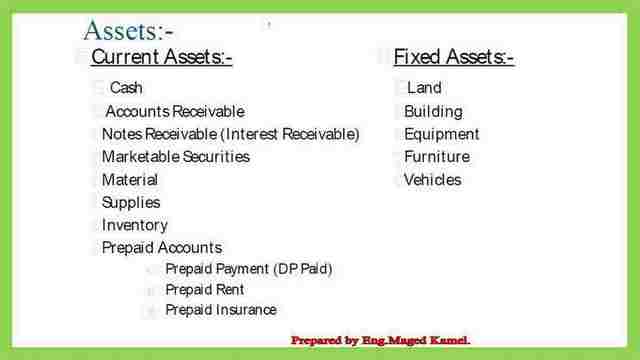
What are the Fixed assets?
Fixed assets are of a fixed nature in the context that they are not readily convertible into cash. They require elaborate procedures and time for their sale and are converted into cash—land, building, plant, machinery, and equipment.
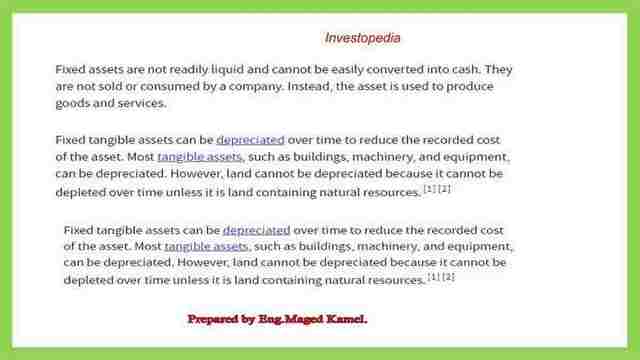
Furniture is an example of a fixed asset. Other names used for fixed assets are non-current assets, long-term assets, or hard assets. Generally, the value of fixed assets reduces over a period of time (known as depreciation).
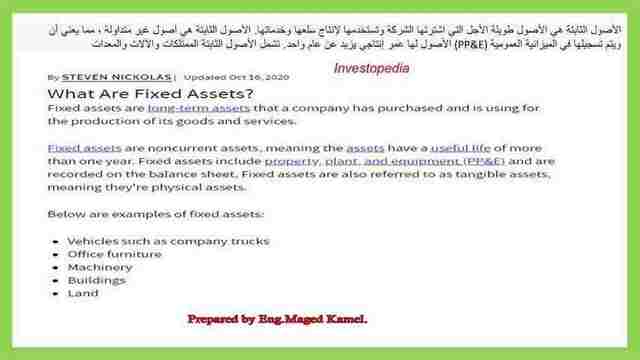
What are the current assets?
The definition is quoted from https://efinancemanagement.com/.
Current assets are one of the types of assets on the asset side of the balance sheet which majorly comprises cash and bank balance, inventories, and account receivables/debtors.
The Key features of current assets are their short-lived existence, fast conversion into other assets, decisions that are recurring and quick, and lastly, they are interlinked to each other. Virtually, current asset management is almost as good as working capital management.

The term current asset is formed with two words – current and asset. Current means circulating and asset means valuables. Current assets are those assets or valuables of a business that keep circulating. The typical time frame for circulation is the financial period which is normally one year.
Cash or Bank Balances.
Cash and bank balance are the balance that a company holds for its urgent needs. This balance would keep fluctuating and a particular balance would not last for more than a week or two. The balance will be high when the collection is done by the customer and it will again reduce when payment is made for purchasing raw materials.
Inventories.
Inventories form all kinds of inventories, whether raw material, work-in-progress stock, or finished goods. The time frame of their conversion is also normally between 2 to 60 days and the rest depends on the industry in which the company operates.
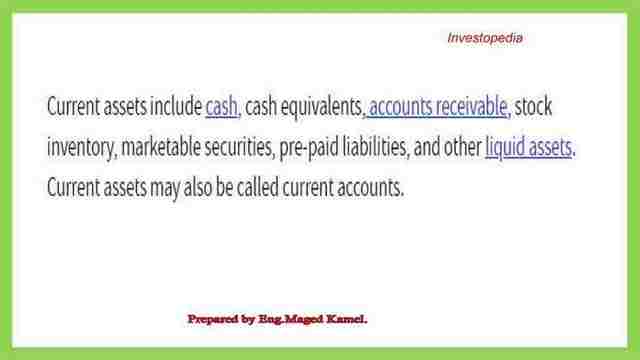
This is the pdf used for illustration in this post and the next post:
Engineering Economy. This is a great link that illustrates different types of economies, and how to make economic decisions. the time value of money, Applying Theory to Practice.
There is another link to the definition of current assets.
The next post, Easy approach to types of assets-part-2.
